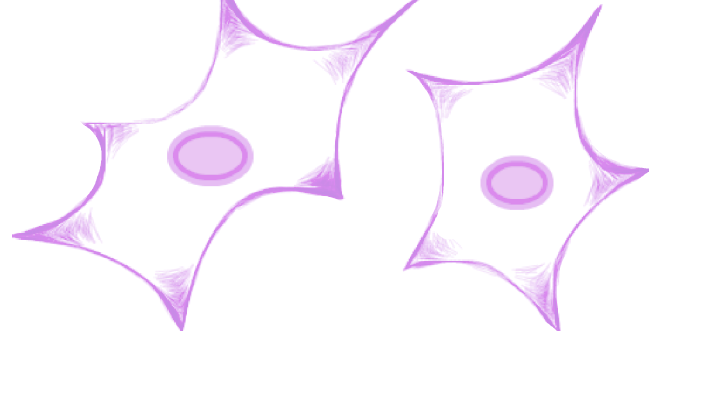| Process: |
GO:43066; negative regulation of apoptotic process
GO:6915; apoptotic process
GO:42981; regulation of apoptotic process
GO:12501; programmed cell death
GO:6974; cellular response to DNA damage stimulus
GO:51607; defense response to virus
GO:43065; positive regulation of apoptotic process
GO:80135; regulation of cellular response to stress
GO:55085; transmembrane transport
GO:9410; response to xenobiotic stimulus
GO:8630; intrinsic apoptotic signaling pathway in response to DNA damage
GO:97192; extrinsic apoptotic signaling pathway in absence of ligand
GO:1836; release of cytochrome c from mitochondria
GO:51902; negative regulation of mitochondrial depolarization
GO:7565; female pregnancy
GO:50853; B cell receptor signaling pathway
GO:8284; positive regulation of cell population proliferation
GO:2001243; negative regulation of intrinsic apoptotic signaling pathway
GO:9314; response to radiation
GO:1902166; negative regulation of intrinsic apoptotic signaling pathway in response to DNA damage by p53 class mediator
GO:10507; negative regulation of autophagy
GO:6959; humoral immune response
GO:209; protein polyubiquitination
GO:8625; extrinsic apoptotic signaling pathway via death domain receptors
GO:22898; regulation of transmembrane transporter activity
GO:30890; positive regulation of B cell proliferation
GO:2000811; negative regulation of anoikis
GO:9636; response to toxic substance
GO:30307; positive regulation of cell growth
GO:34097; response to cytokine
GO:42100; B cell proliferation
GO:43524; negative regulation of neuron apoptotic process
GO:51924; regulation of calcium ion transport
GO:70059; intrinsic apoptotic signaling pathway in response to endoplasmic reticulum stress
GO:2001240; negative regulation of extrinsic apoptotic signaling pathway in absence of ligand
GO:10039; response to iron ion
GO:32469; endoplasmic reticulum calcium ion homeostasis
GO:32848; negative regulation of cellular pH reduction
GO:35094; response to nicotine
GO:46902; regulation of mitochondrial membrane permeability
GO:51402; neuron apoptotic process
GO:51881; regulation of mitochondrial membrane potential
GO:2001234; negative regulation of apoptotic signaling pathway
GO:902; cell morphogenesis
GO:1503; ossification
GO:1541; ovarian follicle development
GO:1656; metanephros development
GO:1657; ureteric bud development
GO:1658; branching involved in ureteric bud morphogenesis
GO:1662; behavioral fear response
GO:1776; leukocyte homeostasis
GO:1782; B cell homeostasis
GO:1822; kidney development
GO:1952; regulation of cell-matrix adhesion
GO:2260; lymphocyte homeostasis
GO:2320; lymphoid progenitor cell differentiation
GO:2326; B cell lineage commitment
GO:2360; T cell lineage commitment
GO:2520; immune system development
GO:2931; response to ischemia
GO:3014; renal system process
GO:6470; protein dephosphorylation
GO:6582; melanin metabolic process
GO:6808; regulation of nitrogen utilization
GO:6874; cellular calcium ion homeostasis
GO:6979; response to oxidative stress
GO:7015; actin filament organization
GO:7409; axonogenesis
GO:7569; cell aging
GO:8283; cell population proliferation
GO:8285; negative regulation of cell population proliferation
GO:8584; male gonad development
GO:8631; intrinsic apoptotic signaling pathway in response to oxidative stress
GO:8637; apoptotic mitochondrial changes
GO:9605; response to external stimulus
GO:9791; post-embryonic development
GO:9887; animal organ morphogenesis
GO:10224; response to UV-B
GO:10332; response to gamma radiation
GO:10468; regulation of gene expression
GO:10506; regulation of autophagy
GO:10523; negative regulation of calcium ion transport into cytosol
GO:10559; regulation of glycoprotein biosynthetic process
GO:14031; mesenchymal cell development
GO:14042; positive regulation of neuron maturation
GO:14911; positive regulation of smooth muscle cell migration
GO:18105; peptidyl-serine phosphorylation
GO:18107; peptidyl-threonine phosphorylation
GO:21747; cochlear nucleus development
GO:22612; gland morphogenesis
GO:30097; hemopoiesis
GO:30183; B cell differentiation
GO:30217; T cell differentiation
GO:30279; negative regulation of ossification
GO:30308; negative regulation of cell growth
GO:30318; melanocyte differentiation
GO:30336; negative regulation of cell migration
GO:31069; hair follicle morphogenesis
GO:31103; axon regeneration
GO:31647; regulation of protein stability
GO:32835; glomerulus development
GO:32880; regulation of protein localization
GO:33033; negative regulation of myeloid cell apoptotic process
GO:33077; T cell differentiation in thymus
GO:33138; positive regulation of peptidyl-serine phosphorylation
GO:33689; negative regulation of osteoblast proliferation
GO:35265; organ growth
GO:40008; regulation of growth
GO:40018; positive regulation of multicellular organism growth
GO:42149; cellular response to glucose starvation
GO:42542; response to hydrogen peroxide
GO:43029; T cell homeostasis
GO:43067; regulation of programmed cell death
GO:43085; positive regulation of catalytic activity
GO:43375; CD8-positive, alpha-beta T cell lineage commitment
GO:43473; pigmentation
GO:43583; ear development
GO:45069; regulation of viral genome replication
GO:45636; positive regulation of melanocyte differentiation
GO:45930; negative regulation of mitotic cell cycle
GO:46671; negative regulation of retinal cell programmed cell death
GO:48041; focal adhesion assembly
GO:48066; developmental pigmentation
GO:48070; regulation of developmental pigmentation
GO:48087; positive regulation of developmental pigmentation
GO:48536; spleen development
GO:48538; thymus development
GO:48545; response to steroid hormone
GO:48546; digestive tract morphogenesis
GO:48589; developmental growth
GO:48599; oocyte development
GO:48743; positive regulation of skeletal muscle fiber development
GO:48753; pigment granule organization
GO:48873; homeostasis of number of cells within a tissue
GO:50790; regulation of catalytic activity
GO:51384; response to glucocorticoid
GO:51726; regulation of cell cycle
GO:71310; cellular response to organic substance
GO:71456; cellular response to hypoxia
GO:72593; reactive oxygen species metabolic process
GO:98609; cell-cell adhesion
GO:2000134; negative regulation of G1/S transition of mitotic cell cycle
GO:2000378; negative regulation of reactive oxygen species metabolic process
|
